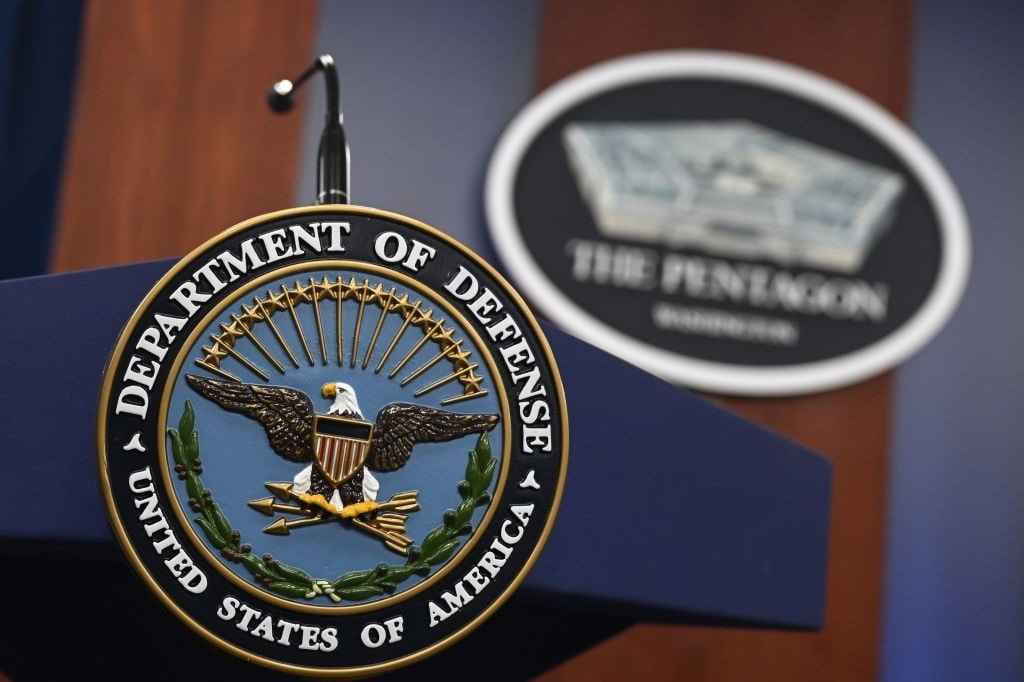
Government Accountability Office found some disturbing threats to national security there.
How does the Department of Defense go shopping? It consults a “catalogue” of sorts, filled with Defense Industrial Base (DIB) suppliers, approved for-profit commercial firms, nonprofit research centers and university laboratories, and government-owned industrial facilities. There the government can buy everything from “large, technologically sophisticated weapon systems and highly specialized operational support to general commercial products and routine services,” according to Congress.gov. But a recent Government Accountability Office (GAO) report revealed some blind spots in the process that could pose danger to US national security.
The GAO found there is often little transparency into these suppliers and the sources from which they obtain parts and raw materials. Critical components could even be purchased from adversaries like China. With more than 200,000 subcontractors providing parts and subassemblies, it is essential to eliminate risks to prevent supply chain compromise.
Opaque Resources in the Defense Industrial Base Are Troubling
Historically, the weak link in America’s ability to secure its domestic and international supply chains has been sabotage, robbery, counterfeiting, and intellectual property theft. Particularly perilous is the potential for China and other US adversaries to ban sales of raw materials or microelectronics to the United States and disrupt American commerce. For example, the People’s Republic of China (PRC) supplies 94% of the world’s gallium, essential for the manufacture of semiconductors, lasers, and magnets needed for such defense technologies as radar systems. The PRC banned the export of gallium to the United States in December 2024.
DIB providers are divided into prime contractors and Tier One through Tier Three suppliers. Prime contractors are large companies like Boeing, Lockheed Martin, and Raytheon that build and deliver large defense systems, ships, combat aircraft, missiles, and other military products. Next come the subcontractors, ranging from Tier One to Tier Three. For example, Tier One suppliers provide major subsystems like engines, radars, and other subassemblies to the primes.
Tiers Two and Three provide parts and intermediate components that go into subassemblies. Tier Three provides consumables, multi-purpose components, and basic raw materials, including nuts, bolts, screws, and common microchips. The origin of these items should be specified in the contract or a bill of lading. Nonetheless, obtaining such information has proven elusive for the Defense Department, according to the GAO.
Lower-Level Supplier Tiers Are the Problem
It is usually at Tier Three and lower levels of suppliers that counterfeit parts and substandard materials are introduced. What the GAO found:
“The Department of Defense (DOD) considers reliance on foreign sources for items it procures a national security risk. DOD estimates that over 200,000 suppliers help produce advanced weapon systems and non-combat goods. The primary procurement database for the federal government, however, provides little visibility into where these goods are manufactured or whether materials and parts suppliers are domestic or foreign.”
President Donald Trump’s administration is making an effort to reduce its dependence on foreign suppliers, particularly China. “The SBA [Small Business Association] partnered with several private-sector co-sponsors to provide public access to three free databases,” The Daily Signal reported. “The portal builds on SBA’s ‘Made in America Manufacturing Initiative,’ which is aimed at expanding access to capital for US manufacturers, promoting a skilled workforce, and cutting $100 billion in red tape.” This initiative should provide more visibility into DIB Tier Three and below suppliers, where a large portion consists of small businesses.
The Department of Defense recognizes that there are significant national security concerns associated with the inability to trace the origin of essential parts for weapon systems in the industrial base. “DOD is pursuing efforts to better manage fragmentation by integrating its supply chain management efforts and sharing supplier information more efficiently across the department,” the GAO report concluded. The risks of a critical DIB supply chain compromise from dependence on foreign sources are real. DOD must up its game.
The views expressed are those of the author and not of any other affiliate.
Liberty Nation does not endorse candidates, campaigns, or legislation, and this presentation is no endorsement.

















